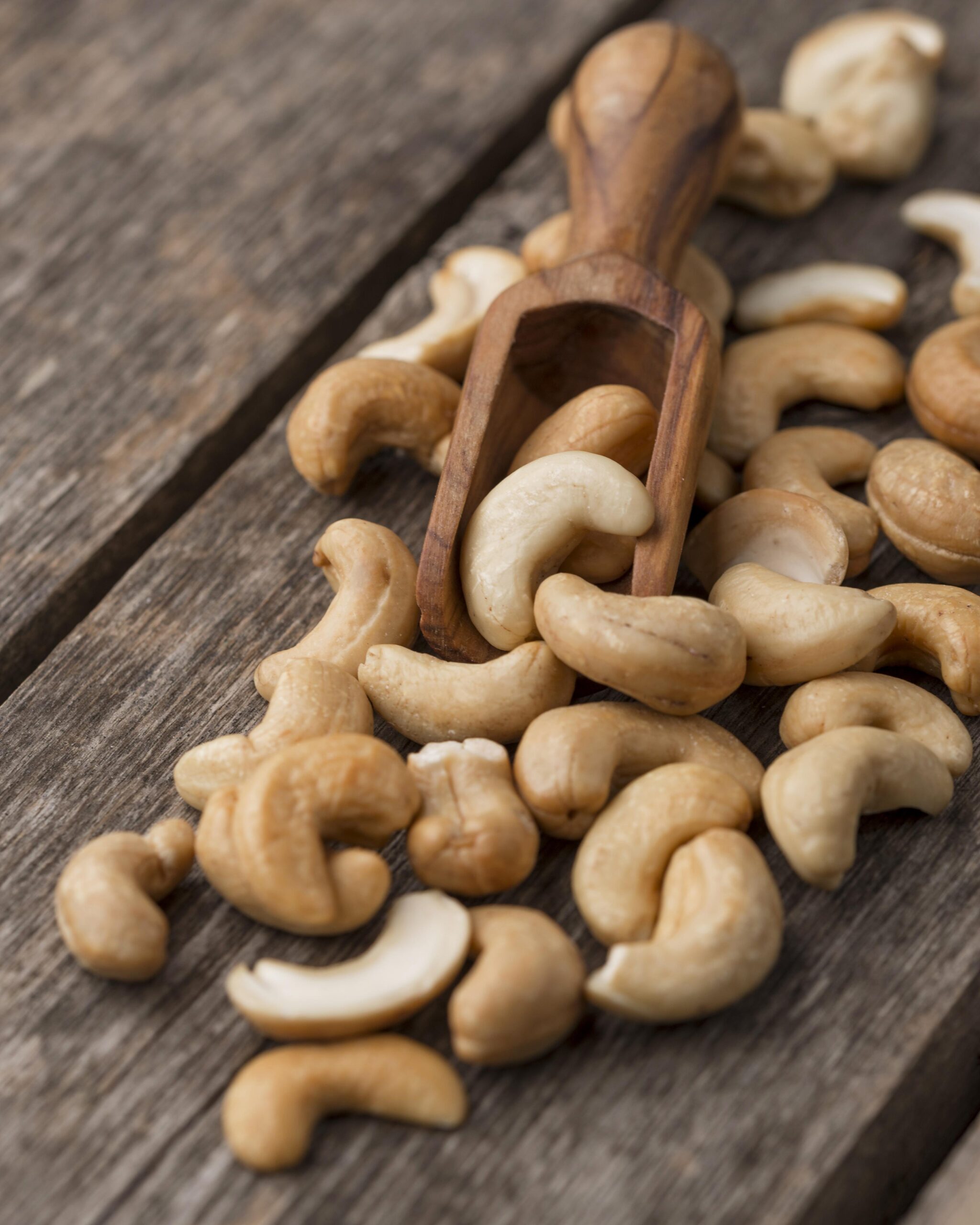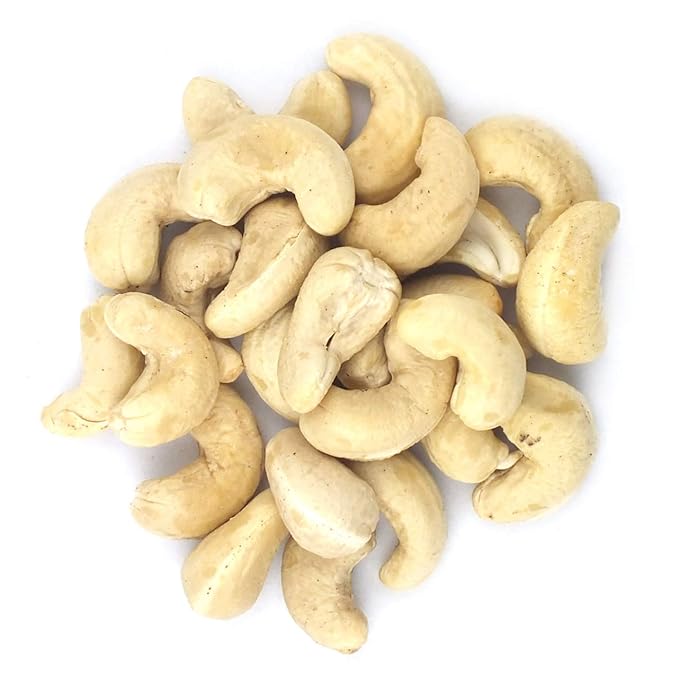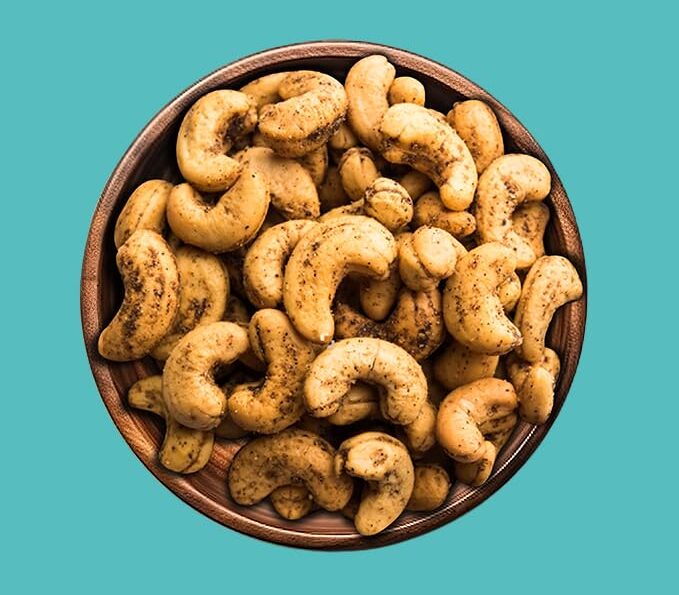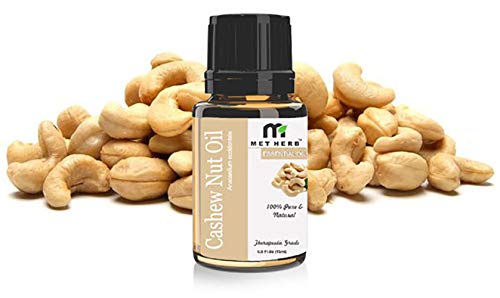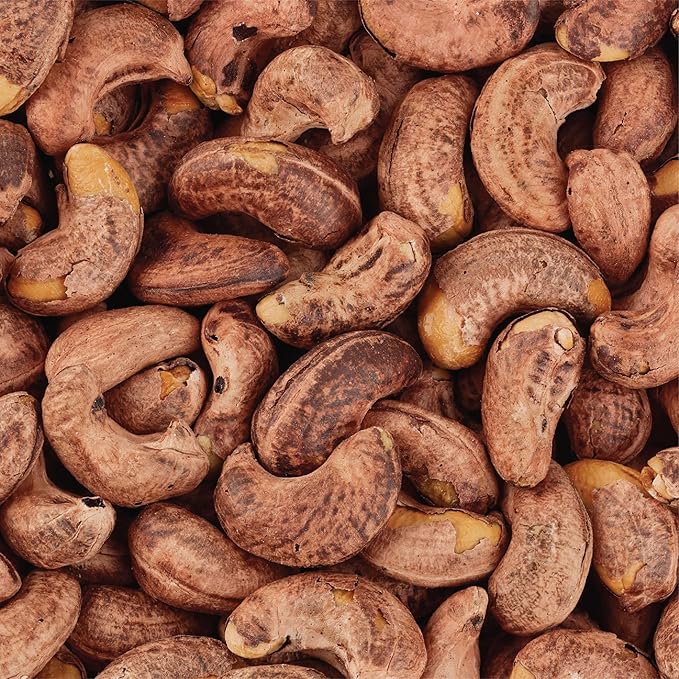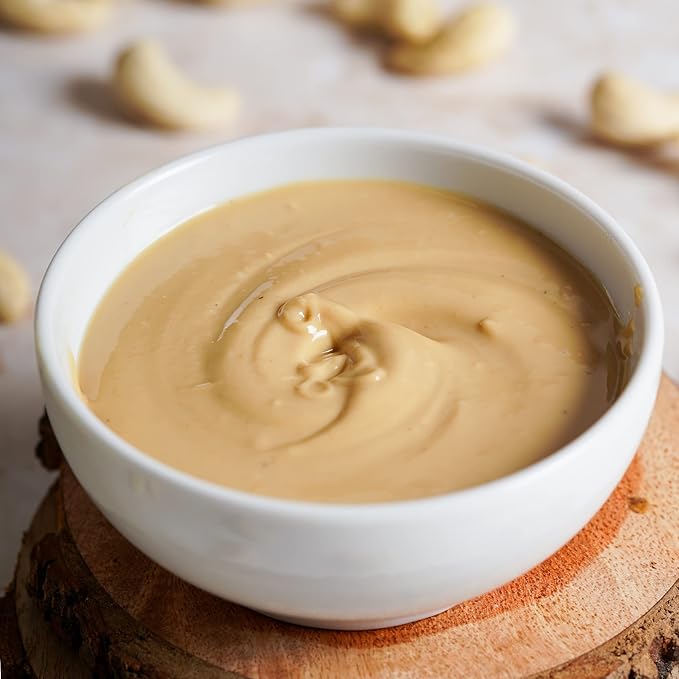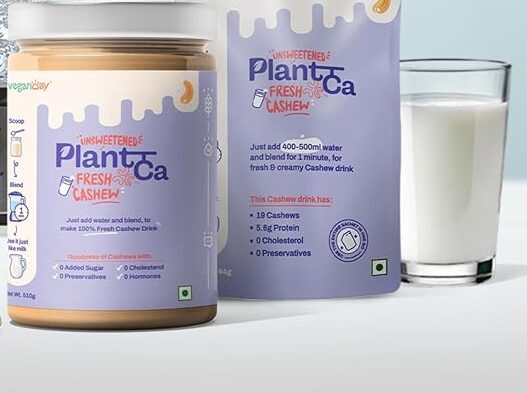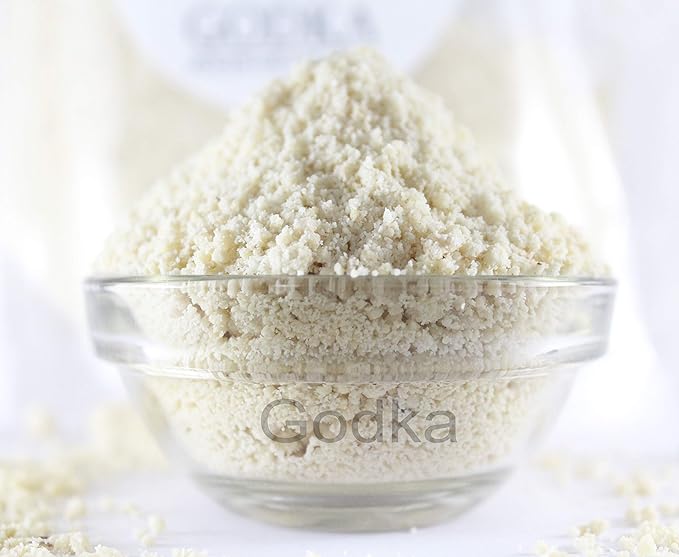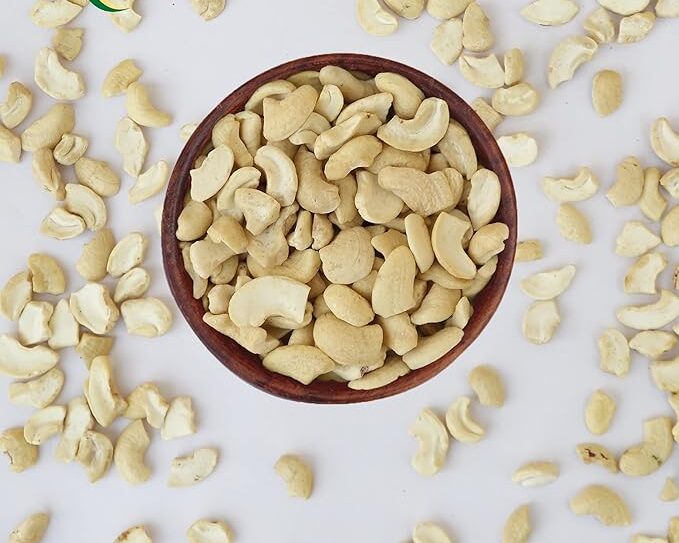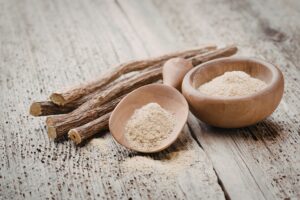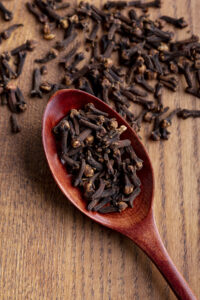Cashew is a delicious and nutritious nut loved by millions worldwide. It offers a creamy texture, a subtly sweet flavor, and a variety of health benefits. Whether enjoyed raw, roasted, or blended into butter, this nut is a powerhouse of essential nutrients. Packed with healthy fats, proteins, and minerals, cashew is not only tasty but also contributes to overall well-being.
Table of Contents
What is Cashew?
It is a kidney-shaped nut that grows on the cashew tree (Anacardium occidentale). Originally from Brazil, it is now cultivated in many tropical regions, including India, Vietnam, and Africa. Unlike other nuts, it develops outside a fruit called the cashew apple. The nut is encased in a hard shell containing urushiol, a toxic substance that must be removed before consumption.
Cashew trees thrive in warm climates and sandy soils. They produce both the nut and the cashew apple, a juicy, edible fruit that is often used to make beverages and jams. The nut undergoes a careful processing method to remove toxins, ensuring it is safe for consumption.
Nutritional Value of Cashew
It is rich in essential nutrients that support a balanced diet. Here is the nutritional breakdown per 100 grams:
Calories: ~553 kcal
Protein: ~18g
Carbohydrates: ~30g
Fats: ~44g (mostly healthy monounsaturated fats)
Fiber: ~3.3g
Vitamins: B6, E, and K
Minerals: Magnesium, phosphorus, zinc, iron, and copper
Each of these nutrients plays a key role in maintaining good health. The combination of proteins, healthy fats, and essential minerals makes it a nutrient-dense food.
Also Read: Benefits of Almond (Badam)
Health Benefits of Cashew
1. Supports Heart Health
It contains monounsaturated and polyunsaturated fats, which promote heart health. These fats lower bad cholesterol while boosting good cholesterol. Studies show that regular consumption lowers the risk of cardiovascular diseases.
Moreover, it is rich in magnesium, which helps regulate blood pressure. Lower blood pressure reduces strain on the heart, decreasing the likelihood of heart-related illnesses.
2. Boosts Immunity
Zinc and antioxidants in it strengthen the immune system. They help fight infections, speed up healing, and support overall health. Eating it regularly can protect the body from harmful pathogens.
Additionally, it contains selenium, a powerful antioxidant that helps reduce inflammation. It also contributes to the proper functioning of immune cells.
Also Read: Benefits of Fenugreek Leaves (Kasuri Methi)
3. Improves Bone Health
The magnesium, phosphorus, and calcium content in it support strong bones. These minerals are essential for bone density and help prevent conditions like osteoporosis. Including it in your diet contributes to long-term skeletal health.
Furthermore, vitamin K in it aids in bone metabolism. It ensures calcium is effectively utilized by bones, keeping them strong and resilient.
4. Enhances Brain Function
It is rich in essential fatty acids that nourish the brain. These nutrients enhance memory, improve cognitive functions, and lower the risk of neurodegenerative diseases. The presence of copper also supports brain cell communication.
In addition, magnesium in it promotes relaxation and reduces stress. It helps regulate neurotransmitters, improving mood and mental clarity.
5. Aids in Weight Management
Despite being high in calories, it helps in weight management when consumed in moderation. Its protein and healthy fats keep you full for longer, reducing unnecessary snacking.
Moreover, the fiber in it improves digestion, preventing overeating. Replacing unhealthy snacks with it can be a beneficial step toward a balanced diet.
Also Read: Carom Seed Treasure (Ajwain)
6. Promotes Healthy Skin and Hair
It contains copper and antioxidants, which are essential for healthy skin and hair. Copper aids melanin production, enhancing natural skin glow and preventing premature greying of hair.
Vitamin E in it also helps in repairing skin damage and keeping it hydrated. Regular consumption contributes to a youthful complexion.
7. Controls Blood Sugar Levels
It has a low glycemic index, making it suitable for people with diabetes. Its healthy fats and fiber help regulate blood sugar levels, preventing spikes and crashes.
Furthermore, the presence of magnesium aids insulin function, improving glucose metabolism. This makes cashew a great addition to a diabetic-friendly diet.
Also Read: Spice Up Your Life with Cinnamon (Dalchini)
Different Ways to Enjoy Cashew
1. Raw or Roasted
It can be eaten raw or roasted as a healthy snack. Roasting enhances the flavor while maintaining most of its nutrients.
2. Cashew Butter
A creamy alternative to peanut butter, cashew butter is nutritious and delicious. It can be spread on toast, added to smoothies, or used in baking.
3. Cashew Milk
A dairy-free option, cashew milk is a great alternative for lactose-intolerant individuals. It is rich, creamy, and perfect for coffee, cereals, and smoothies.
4. Cashew in Desserts
It is widely used in sweets like cakes, cookies, and ice cream. Its creamy texture adds richness to desserts.
5. Cashew in Savory Dishes
It is a key ingredient in many cuisines. It is often used in Indian, Thai, and Chinese dishes to enhance flavor and texture.
Also Read: Rock Salt Benefits (Sendha Namak)
Possible Side Effects of Cashew
Although it is highly beneficial, excessive consumption may lead to some issues:
Weight Gain: It is calorie-dense, so eating too much can contribute to weight gain.
Allergic Reactions: Some people may be allergic to it, experiencing rashes, swelling, or difficulty breathing.
Kidney Stones: It contains oxalates, which may contribute to kidney stone formation in sensitive individuals.
Also Read: Black Seed Secrets (Kalonji)
FAQs on Cashew
1. Is cashew good for daily consumption?
Yes, but in moderation. Around 28-30 grams per day is recommended for optimal benefits.
2. Can cashew help in weight loss?
Yes, its healthy fats and proteins promote satiety, reducing overall calorie intake.
3. Is cashew safe for diabetics?
It has a low glycemic index and aid in blood sugar control.
4. What is the best way to store cashew?
Place it in a tightly closed container and keep it in a cool, dry area. Refrigeration extends shelf life.
5. Does roasting cashew reduce its nutrients?
Roasting slightly reduces vitamin content but enhances flavor and digestibility.
Conclusion
It is a delicious, versatile, and nutritious nut that offers multiple health benefits. Whether consumed as a snack, in meals, or as a dairy alternative, it is a valuable addition to a healthy diet.
Also Read: Khas Khas, a Forgotten Miracle (Poppy Seeds)

